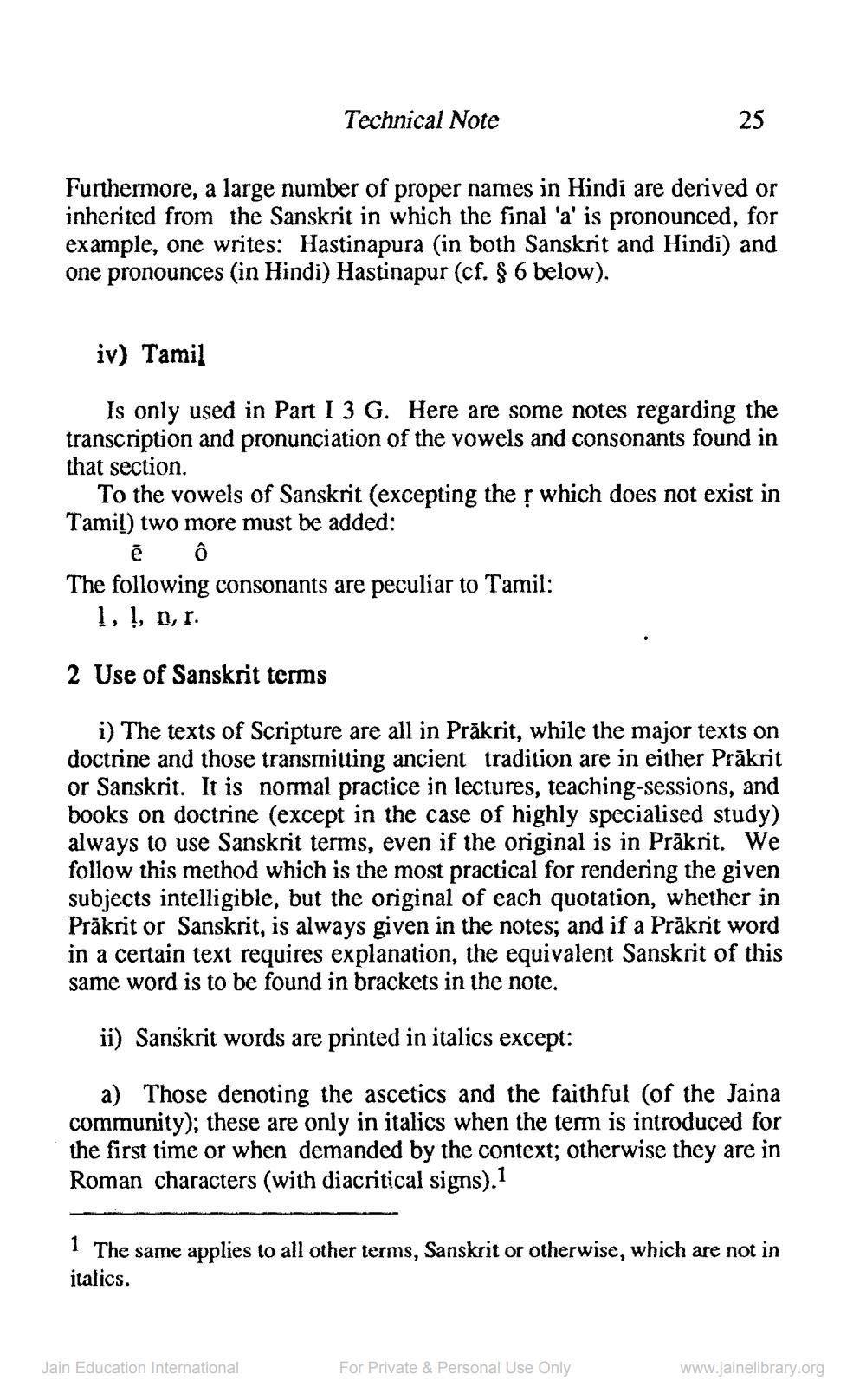________________
Technical Note
25
Furthermore, a large number of proper names in Hindi are derived or inherited from the Sanskrit in which the final 'a' is pronounced, for example, one writes: Hastinapura (in both Sanskrit and Hindi) and one pronounces (in Hindi) Hastinapur (cf. § 6 below).
iv) Tamil
Is only used in Part I 3 G. Here are some notes regarding the transcription and pronunciation of the vowels and consonants found in that section.
To the vowels of Sanskrit (excepting the ļ which does not exist in Tamil) two more must be added:
ē Ô The following consonants are peculiar to Tamil:
1, !, D, r.
2 Use of Sanskrit terms
i) The texts of Scripture are all in Prākrit, while the major texts on doctrine and those transmitting ancient tradition are in either Prākrit or Sanskrit. It is normal practice in lectures, teaching-sessions, and books on doctrine (except in the case of highly specialised study) always to use Sanskrit terms, even if the original is in Prākrit. We follow this method which is the most practical for rendering the given subjects intelligible, but the original of each quotation, whether in Prākrit or Sanskrit, is always given in the notes, and if a Prākrit word in a certain text requires explanation, the equivalent Sanskrit of this same word is to be found in brackets in the note.
ii) Sanskrit words are printed in italics except:
a) Those denoting the ascetics and the faithful (of the Jaina community); these are only in italics when the term is introduced for the first time or when demanded by the context; otherwise they are in Roman characters (with diacritical signs).1
The same applies to all other terms, Sanskrit or otherwise, which are not in italics.
Jain Education International
For Private & Personal Use Only
www.jainelibrary.org




